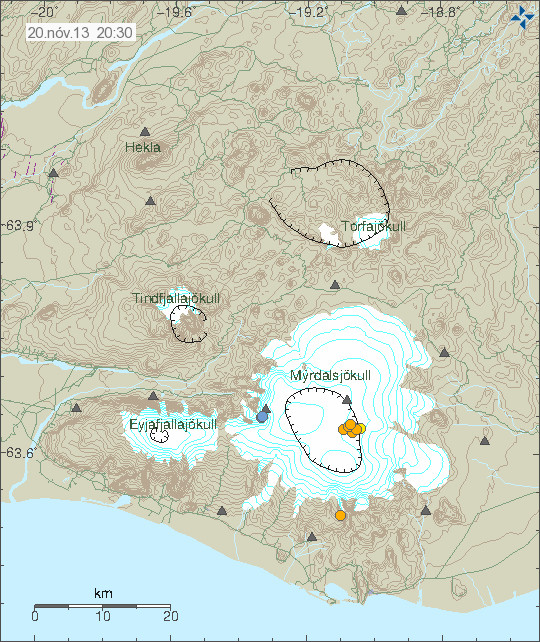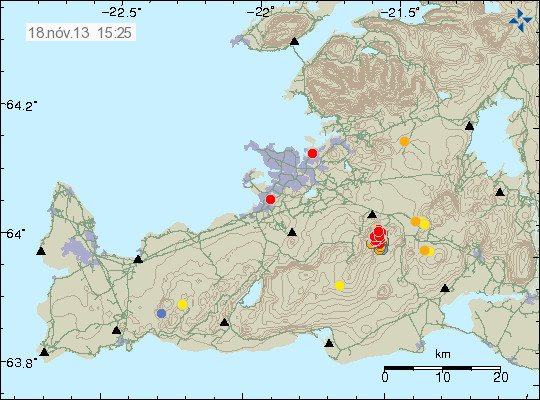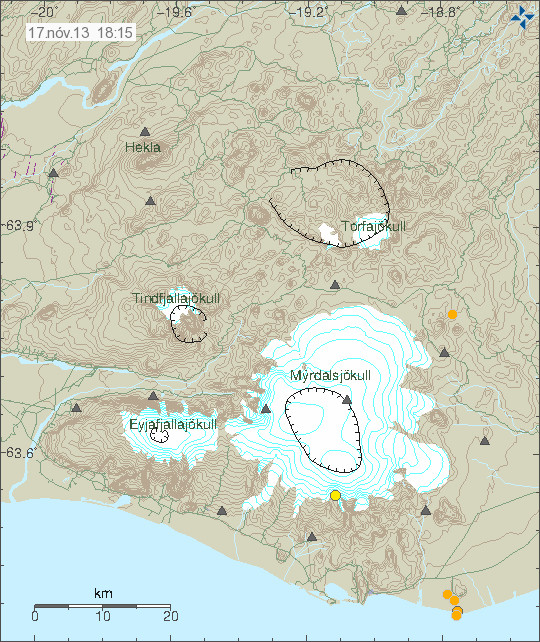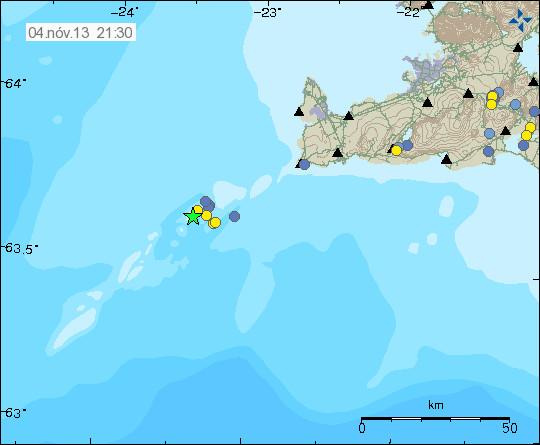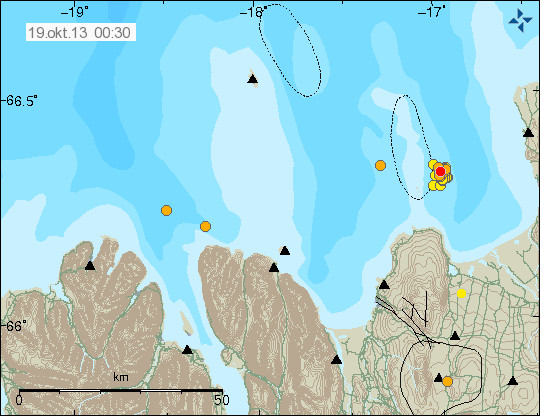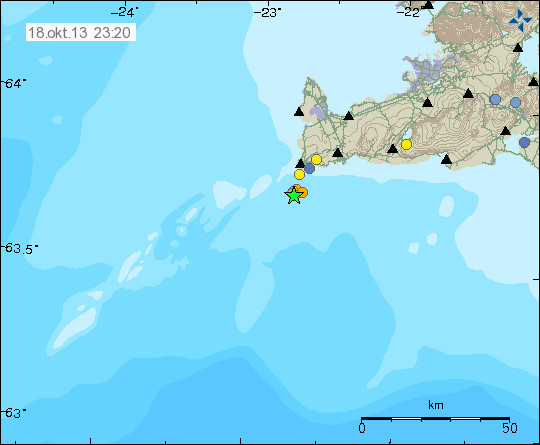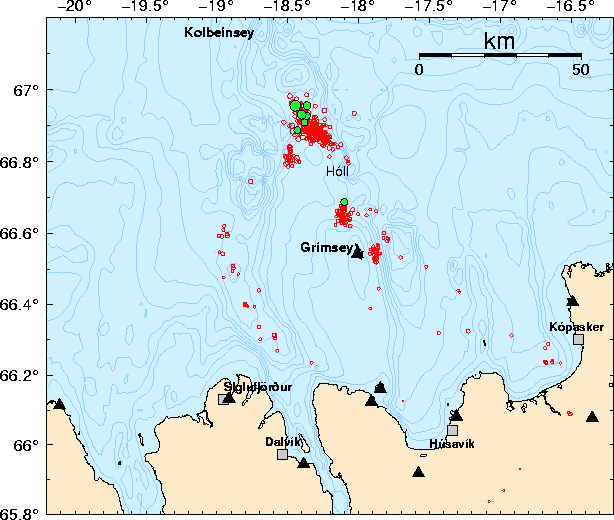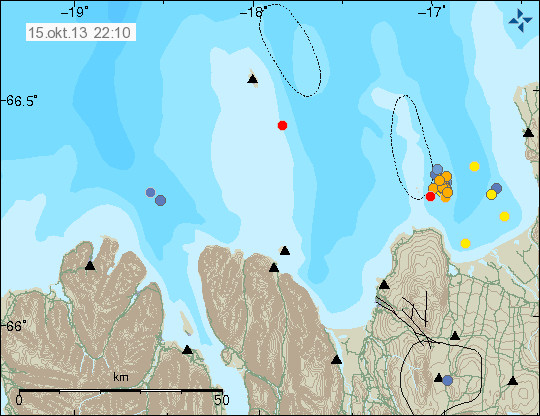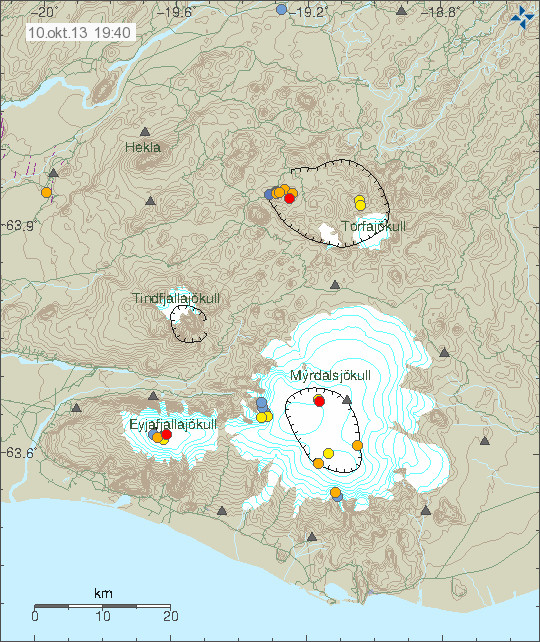Today at 01:11 UTC (13-October-2013) an earthquake swarm started on the Reykjanes peninsula. Early in this earthquake it was just minor earthquakes until 07:34 UTC an earthquake with magnitude 4,8 took place on the Reykjanes peninsula. Before the strongest earthquake took place, an magnitude 3,4 and 3,5 took place. Several earthquakes with magnitude above 3,0 took place following the main earthquake. The strongest earthquake was felt over an wide area, from Vík í Mýrdal to Hólmavík in north-west Iceland. Far as I know no damage did take place following this earthquake.
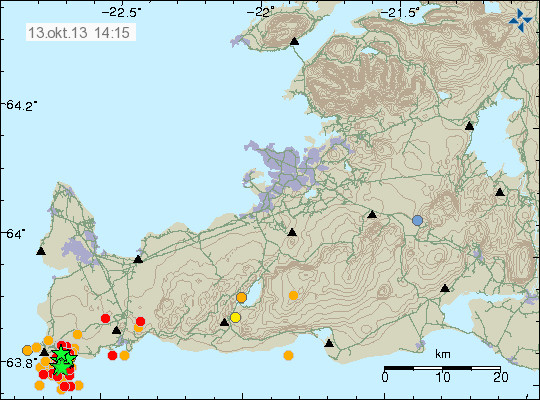
The earthquake swarm on the Reykjanes peninsula. Green stars mark earthquakes with magnitude above 3,0. Copyright of this image belongs to Icelandic Meteorological Office.
This earthquake did appear clearly on all of my geophone stations in Iceland. They can be viewed here.

The magnitude 4,8 earthquake on the Eyrarbakki geophone station. The earthquake signal is strongest on this geophone station and clearly tops the sensor it self, it can be seen how the signal goes above the maximum line on the geophone image. This image is released under Creative Commons licence. Please see CC Licence page for more details on this licence.
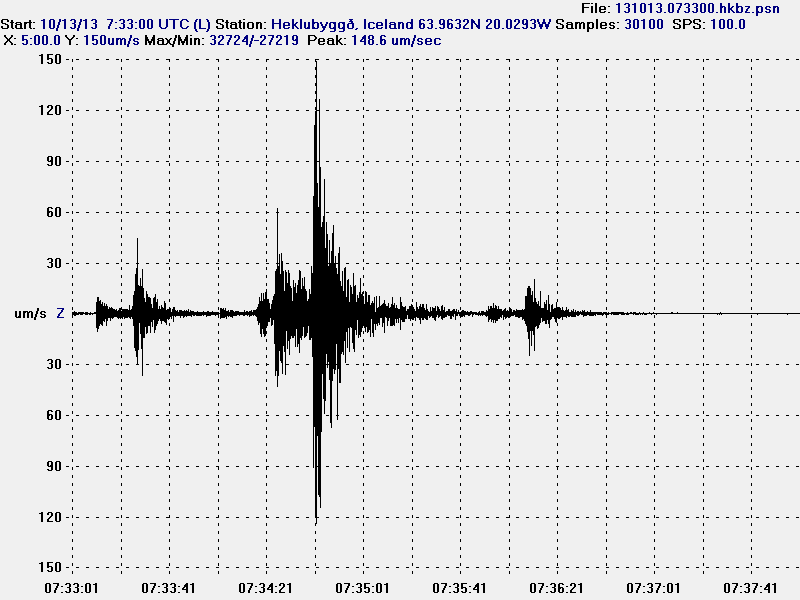
The magnitude 4,8 earthquake at Heklubyggð geophone station. This image is released under Creative Commons licence. Please see CC Licence page for more details on this licence.
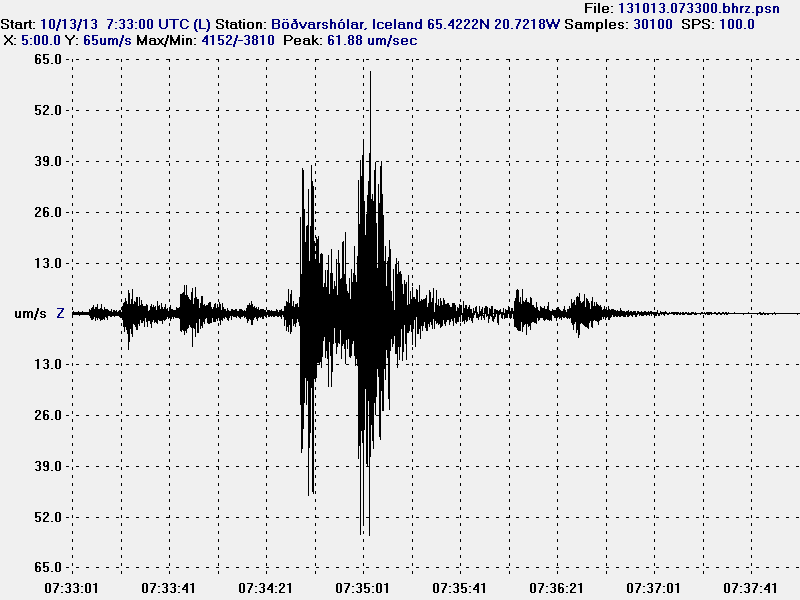
The magnitude 4,8 earthquake at Böðvarshólar geophone station. This image is released under Creative Commons licence. Please see CC Licence page for more details on this licence.
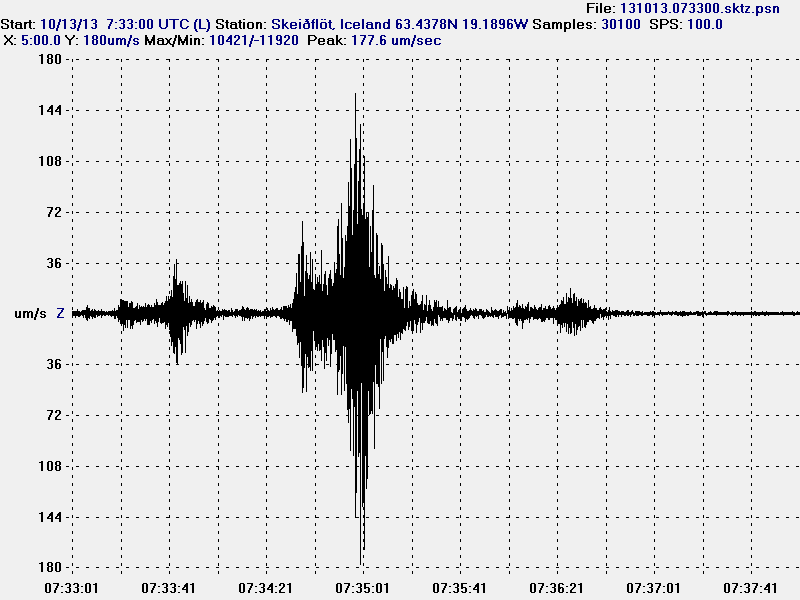
The magnitude 4,8 earthquake at Skeiðflöt geophone station. The earthquake did appear clearly even if the noise level is high on that station. This image is released under Creative Commons licence. Please see CC Licence page for more details on this licence.
It is impossible to know for sure if this earthquake swarm is going to increase again. For the past few hours activity has been dropping, there is however nothing that says activity is not going to increase again. Such activity is common in this area, but it’s impossible to know for sure what happens next. At the moment there is nothing to suggest that volcano activity is the source of this activity. That might change but I think it is unlikely to be the case at the moment, regardless of what the future has in store.
